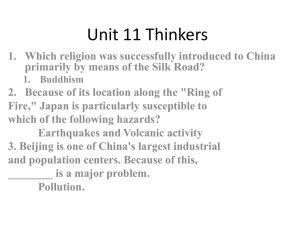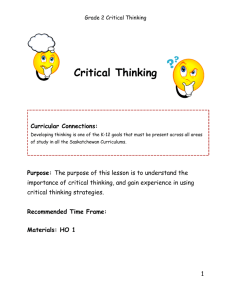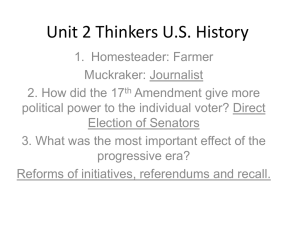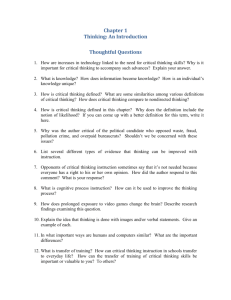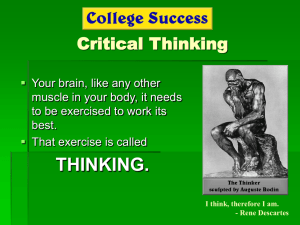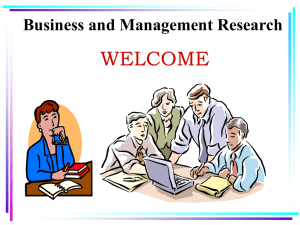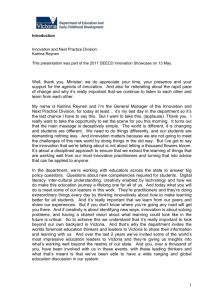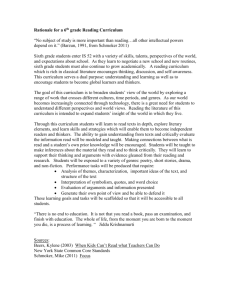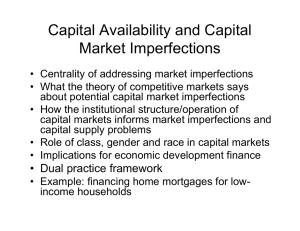File - Jonathan B. Hoggard
advertisement
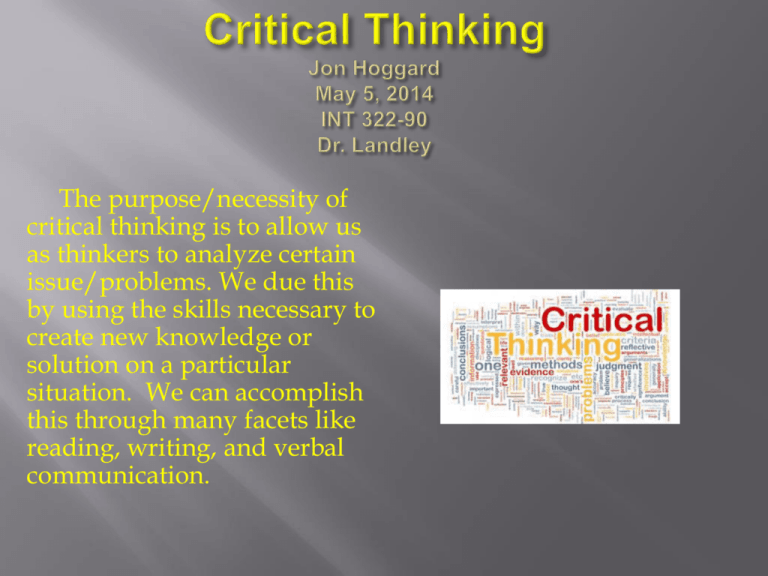
The purpose/necessity of critical thinking is to allow us as thinkers to analyze certain issue/problems. We due this by using the skills necessary to create new knowledge or solution on a particular situation. We can accomplish this through many facets like reading, writing, and verbal communication. Stages of Critical thinking There are many stages of critical thinking. The first stage, is the searching for the challenges in the problem or issue. Sometimes the situation is very noticeable, but at times we must really look to find the problem/issue. The second stage, is the expressing the problem/issue phase. Here we express the situation in the most coherent way so that all can plainly see what it is. The third stage, is where we research the problem/issue in order to formulate new knowledge. Lastly, there is the producing ideas stage. This is where we put the research to the test, and try to formulate certain ideas in order to address the issue or problem. Throughout the critical thinking process we are taught to use six main techniques, that will enable us to be successful when looking at any situation. The first skill is being observant. This teaches us to truly grasp what is going on within the problem/solution. The second skill is looking for imperfections in things. This helps us understand that there is no perfection and to look for flaws or imperfections that can be improved. The third teaching is to note the dissatisfaction in yourself and others. The fourth idea is search for causes; this idea causes us to work to gain knowledge of how the problem arose. The fifth skill is to be sensitive to implications. Using this skill we acknowledge the impact that the problem and solution may have on a situation. Finally, the last of the six techniques is to recognize the opportunity in controversy. When expressing problems, the most effective method is the “How can…” form. This method asks a number of questions to open a variety of avenues of thinking. When expressing issues, it is best to ask “Is, does, or should…” questions. These questions do not require factual answers, but instead open the door for opinions to be discussed and arguments to be shared. The first strategy in producing ideas within critical thinking is to force uncommon responses. This helps us to go beyond our basic ideas and think outside of the box. The next principal is to use free association. This strategy allows ideas to flow freely and lead into new thoughts without guidance. The third strategy is to use analogies. Using analogies allows the mind to make comparisons between very different situations or problems. The next strategy is to look for unusual combinations. When using this strategy, thinkers must consider combining things that don’t naturally fit together to find a solution. The fifth strategy is to visualize the solution. This principal causes thinkers to think through the solution before putting it into effect. Next thinkers should use the strategy of constructing pro and con arguments. This strategy allows a person to think of detailed positives and negatives about a situation. Finally, the seventh strategy is constructing relevant scenarios. This strategy encourages thinkers to play out problems through realistic scenarios. There are three steps to refining the solution for a problem. First, you should work out all of the details. You must determine all of the steps and materials for implementing your solution. Next, you should find imperfections and complications. You will use your initial list of details in order to determine areas that may not go as planned. Finally, you must make improvements. By honestly looking at the imperfections you are able to tweak and change your solution and improve the plan. Begin by deciding what action should be taken. In making this decision you will ask a variety of questions that will help specifically define materials, roles, etc. within the resolution. Secondly, you will recognize and overcome difficulties. There are four approaches that can be used in recognizing difficulties within a resolution. Initially, you will look for problems with a common thread. Then you will use resources, such as similar plans, and look for valuable ideas that you may have missed. Next, create a list of how your plan my change a situation both positively and negatively. Finally, pay close attention to the effects that your plan may have on people, including all areas of their daily lives. R – Reflect E – Evaluate A – Argue S – Solve O – Obtain N - Network The R.E.A.S.O.N. acronym is used in our daily lives to help us think critically and problem solve. Concept maps help throughout the process of critical thinking. They can be used in many of the problem solving strategies and solution refining techniques that have been discussed. They serve to visually organize information and see how topics may impact one another. Thinkers are able to discover imperfections or missed steps easily when a plan or solution is laid out in a concept map format. The research map, like the concept map allows thinkers to logically organize thoughts and ideas. The research map is organized using a series of questions that guide research or solutions. Thinkers are able to see how the answers of these questions are related and make changes to imperfections in order to gain new knowledge through possible solutions. Ruggiero, V. R. (2012). The Art of Thinking: A Guide to Critical and Creative Thought. Upper Saddle River: Pearson.
